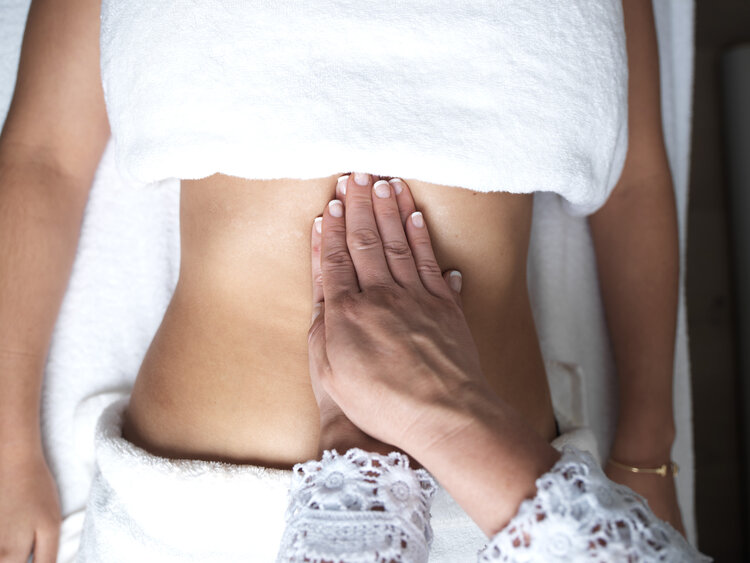12 benefits of Lymphatic Drainage Massage

Manual Lymphatic Drainage (MLD)
Lymphatic Drainage Massage therapy, a gentle and specialized manual technique, offers a range of potential health benefits. This therapy is designed to stimulate the lymphatic system, a crucial component of the body’s immune and waste removal mechanisms. Some of the notable advantages associated with lymphatic drainage include the reduction of edema and swelling, aiding in detoxification, support for the immune system, alleviation of pain and discomfort, relaxation, and promotion of post-surgery healing. Additionally, it has been suggested that lymphatic drainage may have positive effects on various aspects of well-being, from skin health and digestion to headache relief and stress reduction. While many individuals report positive outcomes from this therapy, it’s important to consult with healthcare professionals and trained therapists to determine its suitability for specific health needs and conditions.
detailed explanation of the potential benefits of lymphatic drainage therapy:
Here’s a more detailed explanation of the potential benefits of lymphatic drainage therapy:
- Edema Reduction: Lymphatic drainage is highly effective at reducing edema or swelling, which can be especially beneficial for individuals recovering from surgery, injury, or those with conditions like lymphedema.
- Detoxification: The lymphatic system plays a vital role in the body’s detoxification process. Lymphatic drainage is believed to aid in removing metabolic waste, excess fluids, and toxins from the tissues.
- Immune System Support: A well-functioning lymphatic system helps the immune system identify and combat infections. Lymphatic drainage may assist in maintaining or enhancing immune function by promoting lymphatic fluid circulation.
- Pain Relief: People with chronic pain conditions, such as fibromyalgia, may experience relief through lymphatic drainage. It can reduce pain and discomfort by alleviating muscle tension and improving circulation.
- Relaxation: The gentle, rhythmic movements employed during lymphatic drainage therapy create a calming and soothing experience. Many individuals find it to be a relaxing and stress-reducing treatment.
- Post-Surgery Healing: Lymphatic drainage is commonly used in post-surgery recovery to minimize post-operative swelling, accelerate wound healing, and reduce scarring.
- Cellulite Reduction: Some proponents claim that lymphatic drainage can help with cellulite by improving circulation and the removal of toxins that contribute to its appearance. However, scientific evidence supporting this is limited.
- Skin Health: Improved lymphatic flow can enhance the appearance of the skin by reducing puffiness, enhancing a healthy complexion, and potentially helping with skin conditions like acne.
- Digestive Health: Lymphatic drainage may aid in digestion by reducing bloating, water retention, and other digestive discomforts.
- Headache Relief: Certain types of headaches, particularly migraines, are thought to benefit from lymphatic drainage. It can reduce the severity and frequency of headaches.
- Stress and Anxiety Reduction: The relaxation induced by lymphatic drainage can alleviate stress and anxiety symptoms, making it a popular choice for those seeking relaxation and mental well-being.
- Athletic Performance: Athletes may incorporate lymphatic drainage into their training regimens to reduce muscle soreness, accelerate recovery, and potentially enhance performance.
While these benefits are widely reported anecdotally, more research is needed to establish some of these effects scientifically. Always consult a qualified therapist and your healthcare professional before pursuing lymphatic drainage therapy to ensure it is appropriate for your specific health needs.
While these benefits are widely reported anecdotally, more research is needed to establish some of these effects scientifically. Always consult a qualified therapist and your healthcare professional before pursuing lymphatic drainage therapy to ensure it is appropriate for your specific health needs.
HOW IT WORKS
The lymphatic system is part of the immune system and circulatory system. Composed by veins and lymph nodes strategically localised, the lymphatic system is responsible for collecting and draining metabolic waste, toxins and water excess. By stimulating the lymph nodes and pushing the lymph toward the heart, it will go back inside the bloodstream, filtered by kidneys and flushed out through urination. In this process, water intake is essential.
The human body is composed of up to 60% water, and 70% of this water is out of our cells, waiting to be collected and drained out through our lymphatic system.

Research on Manual Lymphatic drainage: https://www.ncbi.nlm.nih.gov/pmc/articles/PMC2755111/
CONTRAINDICATIONS
A Lymphatic Drainage is contraindicated for tuberculosis, bacterial/viral/fungus infection, open wounds, thrombosis and heart, kidneys or liver failure. If you are receiving any cancer treatment we request a referral letter from your doctor. It is essential to have this treatment done with a specialist in order to have all benefits and avoid any further complications.
